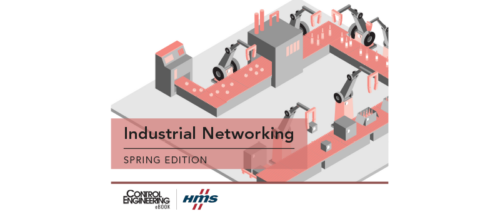Safety compliance and changing industry practices
To minimize worker injuries and incidents, look at existing workflows to assess the degree of risk and identify areas of concern. Then form specific and targeted interventions that can address these gaps.
Regulatory compliance in the process industry is in flux owing to fragmented processes and growth in business. Process industries worldwide are beleaguered with issues, such as skills gap, regulatory compliance, and most importantly, an increase in workplace safety costs. The latter is connected directly to the rising rate of accidents and injuries at the workplace, ineffectual risk analysis, and inefficient forecasting.
Conventional methods adopted by process industries to ensure safety management and identification of potential hazards, such as Hazard and Operability Study (HAZOP), have become tools to achieve compliance. Related challenges can be addressed by leveraging the engineering and design expertise that the industry applies in manufacturing. A new model of process safety management examines constituent components of the problem by addressing each. It also is necessary to leverage the power of digital technology for instilling greater trust in workers through improved working conditions.
Holistic safety
On the factory floor, a few critical safety concerns relate to manual installation, operation, or servicing of machinery, and electrical safety. To design workflows and protocols that minimize worker injuries and incidents during such interactions, the first step is to carry out detailed inspection and analysis of existing workflows, assessing the degree of risk, and identifying areas of concern. Insights derived through this process then form the conceptualization of specific and targeted interventions to address the gaps.
The first and most critical phase of machine risk assessment begins with virtual solution development refined through an iterative process. In the next phase, chosen designs are prototyped and mounted on 3-D replicas of the machinery for testing and further fine-tuning. Then follows fabrication, assembly, and installation of safety guarding systems. Each step is supervised in accordance with safety guidelines.
A similar process must be followed in the case of electrical safety, beginning with thorough inspection, identification of risk areas, and development of detailed plans for managing or mitigating risk. Relevant evaluations include load flow studies, short circuit studies, relay coordination studies, and ground grid studies, among others. Based on these findings, it becomes possible to modify settings on devices that will help ensure equipment protection, minimize arc flash, and reduce system disruption. Another outcome takes the form of optimized sequences of operation for protective devices. Certified machinery safety experts or electrical safety experts should be familiar with industry standards and legislation related to machine safety.
Data analytics, fewer incidents
According to the International Labour Organization, more than 600 work-related accidents take place per minute, worldwide. Concerned over the rising rate of such incidents, even organizations with physical safety measures are now digitalizing factory floor operations to adapt and ensure safety.
The latest industrial trends are heading toward Industrie 4.0. Supply chains are benefitting from increased intelligence through the connectivity of machinery on the factory floor, which allows for real-time supervision and predictive alerts. The same mechanisms also can be actively leveraged to mitigate safety risks and boost productivity.
With insights delivered at each level by advanced data analytics, accidents are being averted through automated alerts, statistical analysis, forecasting, and extrapolation. Such predictive analytics can deliver benefits. One subsidiary of a major manufacturing company reduced the number of safety incidents by more than 75%. Workplace safety and equipment monitoring go hand-in-hand. Several industries use digital visualization to effectively monitor remote areas that were otherwise difficult to access. In this way, the Industrial Internet of Things (IIoT) also has found its use in the predictive maintenance of equipment to avert accidents and deliver better products and services.
This development is particularly valuable for industries where workers routinely are exposed to hazardous working environments. Benefits include improved health and safety, productivity, efficiency, output quality, revenue, and market share, offsetting the initial investment necessary to deploy IIoT-based safety management.
Disruptive forces enter PPE
Wearables have revolutionized the concept of personal protective equipment (PPE) and are no longer limited to safety elements or gloves. With the addition of sensors to existing manufacturing infrastructure, information is harvested, transmitted, and analyzed to predict and avert risks. Cloud connectivity increases the speed and efficiency of data-sharing with stakeholders; in this case, the workers.
Radio chips in workers’ helmets and sensors on equipment monitor and help prevent health issues and accidents, which can in turn translate into long-term cost-savings and enhanced compliance. Other new technologies, such as augmented reality and virtual reality enable more efficient inspections. By simulating expected conditions, diagnosing problems, and assigning them to safety maintenance groups, these technologies equip inspectors with valuable visual-based tools.
Forecasts indicate that digitized plants are the future of manufacturing, enabling machines to connect and collaborate with one another to work faster and more efficiently. At the same time, digital technology, when integrated with machine safety and electrical safety protocols and related hardware and software, augments process safety management.
Transform process industries
Strategic design thinking enables a holistic approach to the complex and pressing problems related to worker safety. Streamlining protocols for addressing machine safety and electrical safety can reduce instances of injuries, occupational exposure, and casualties. Embracing digital technologies allows manufacturers to transcend bare-bones regulatory compliance and actively create policies that can enhance the safety and well-being of workers.
Employee insurance and first-aid services also can help. With smarter technologies, policies, and practices, manufacturers can deepen workforce trust and enhance performance, productivity, and output. Effectively integrating smart technologies into manufacturing lays the foundation for the process industry to enter the digital future with greater confidence in its ability to integrate a wider range of emerging technologies to cater to more varied demands to add value.
Divya Bhatt is head– plant engineering sales Eurasia, L&T Technology Services Ltd., a CFE Media content partner. Edited by Jack Smith, content manager, Control Engineering, CFE Media, jsmith@cfemedia.com.
MORE ADVICE
Key Concepts
- Critical safety concerns relate to manual installation, operation, or servicing of machinery, and electrical safety.
- The solution is first articulated in virtual form and then refined through an iterative process.
- Strategic design thinking enables a holistic approach to the complex and pressing problem of worker safety.
More on safety
Plant Engineering 2016 Safety research says more than 70% of facilities hold regular safety meetings, perform safety audits, and have established a safety committee to enforce safety methods. Another 69% have implemented job safety analysis procedures.
Consider this
Are you ready to enhance safety in your facility?
Do you have experience and expertise with the topics mentioned in this content? You should consider contributing to our CFE Media editorial team and getting the recognition you and your company deserve. Click here to start this process.



